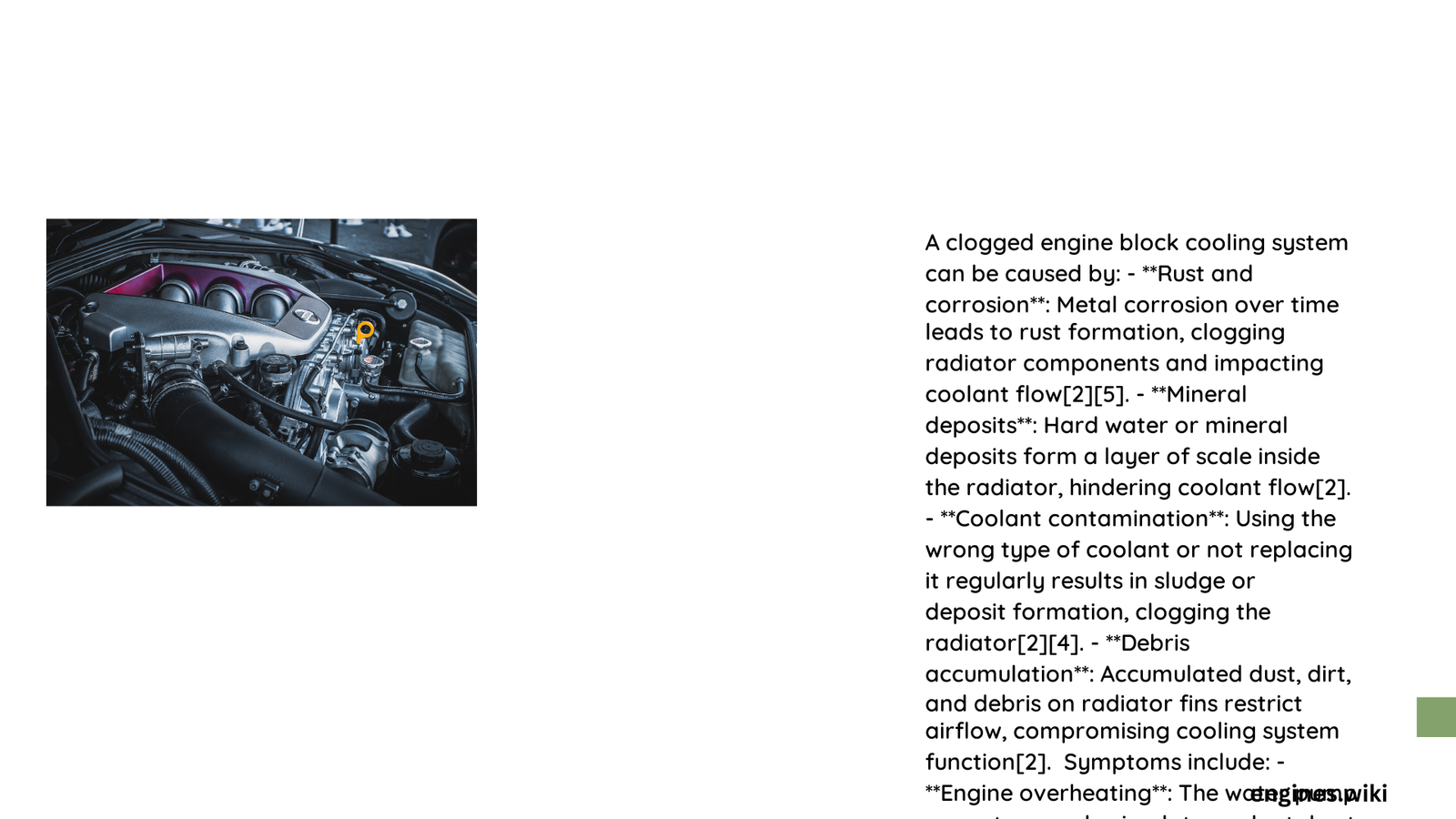A clogged engine block cooling system can transform a smooth driving experience into a potential mechanical nightmare. When cooling passages become obstructed, engine temperatures rise dramatically, risking catastrophic damage to critical components. This comprehensive guide explores the intricate world of cooling system blockages, providing vehicle owners with actionable strategies to detect, diagnose, and resolve these challenging mechanical issues.
What Causes Engine Block Cooling System Blockages?
How Do Debris Accumulate in Cooling Passages?
Cooling system blockages emerge through multiple mechanisms:
- Mineral Deposit Buildup
- Hard water minerals crystallize inside radiator tubes
- Calcium and magnesium create scale-like formations
-
Progressively narrows coolant flow channels
-
Corrosion Byproducts
- Metal components deteriorate over time
- Rust particles circulate through cooling system
- Gradually accumulate in narrow passages
What Are the Primary Symptoms of Blocked Cooling Passages?
| Symptom | Severity | Potential Damage |
|---|---|---|
| Elevated Temperature Gauge | High | Engine Overheating |
| Inconsistent Cabin Heating | Medium | Thermostat Malfunction |
| Visible Coolant Leaks | Critical | Radiator/Hose Failure |
How Can You Detect Cooling System Blockages?
Visual Inspection Techniques
- External Radiator Examination
- Check for bent or damaged cooling fins
- Look for visible debris accumulation
-
Inspect for signs of corrosion
-
Pressure Testing Protocol
- Use specialized cooling system pressure tester
- Measure system’s ability to maintain consistent pressure
- Identify potential leak points
What Professional Diagnostic Methods Exist?
Automotive technicians employ advanced diagnostic techniques:
- Infrared Thermal Imaging
- Identifies temperature variations across cooling system
- Pinpoints specific blockage locations
-
Non-invasive assessment method
-
Coolant Chemical Analysis
- Laboratory testing of extracted coolant
- Determines contamination levels
- Reveals internal system degradation
How to Resolve Cooling System Blockages?
Recommended Intervention Strategies
- Comprehensive Radiator Flush
- Use specialized chemical cleaning solutions
- Remove accumulated mineral deposits
-
Restore optimal coolant circulation
-
Component Replacement
- Replace severely corroded radiator
- Install new thermostat
- Update coolant hoses
What Preventative Maintenance Practices Help?
- Regular coolant system inspections
- Annual coolant replacement
- Use high-quality coolant with corrosion inhibitors
- Monitor engine temperature consistently
Cost Considerations
| Intervention Level | Estimated Cost Range |
|---|---|
| DIY Flush | $30 – $75 |
| Professional Diagnostic | $100 – $250 |
| Complete Cooling System Replacement | $500 – $1,200 |
Expert Recommendations

Professional mechanics emphasize early detection and proactive maintenance. Ignoring initial warning signs can lead to exponentially more expensive repairs.
Key Takeaways
- Monitor temperature gauge regularly
- Address unusual cooling system behaviors immediately
- Invest in preventative maintenance
Warning: Persistent cooling system issues can cause catastrophic engine failure, potentially rendering your vehicle inoperable.
Technical Complexity Warning
Cooling system diagnostics require specialized knowledge. While some maintenance tasks are DIY-friendly, complex issues demand professional intervention.
Reference:
– Society of Automotive Engineers Technical Papers
– ASE Automotive Technician Resources
– Automotive Maintenance Professional Guidelines
